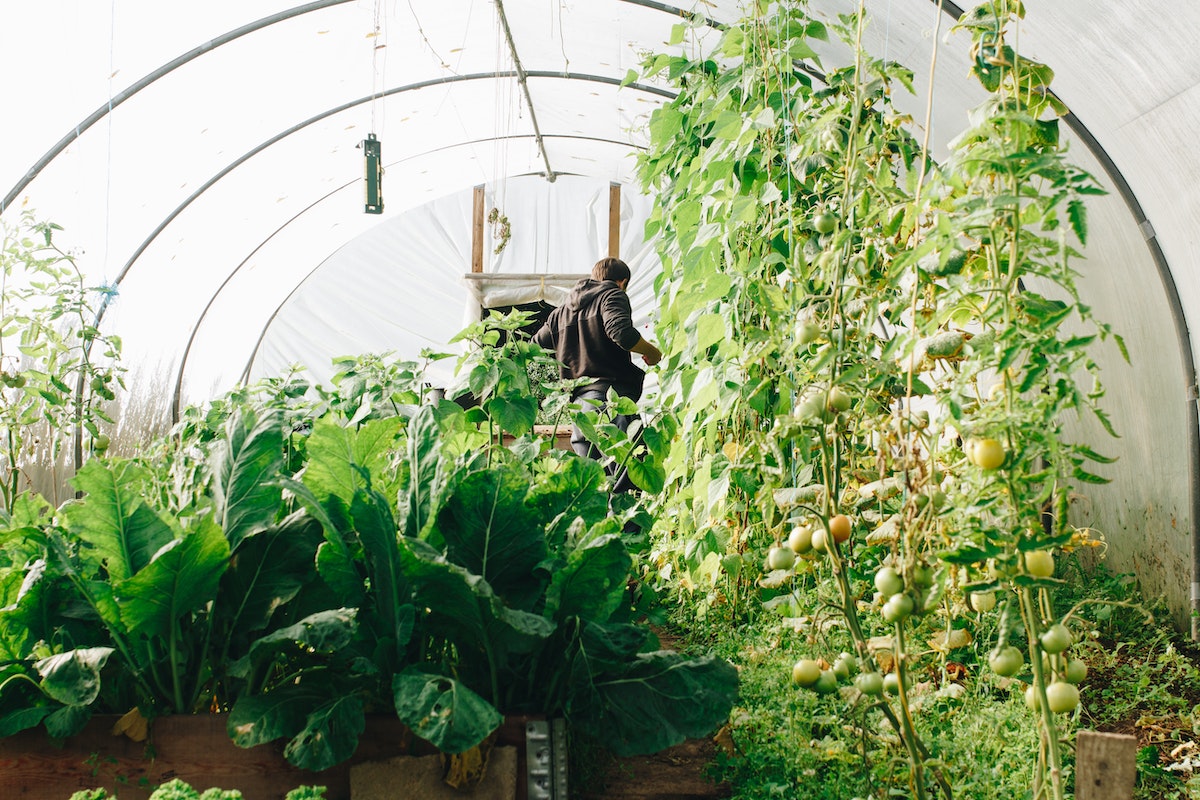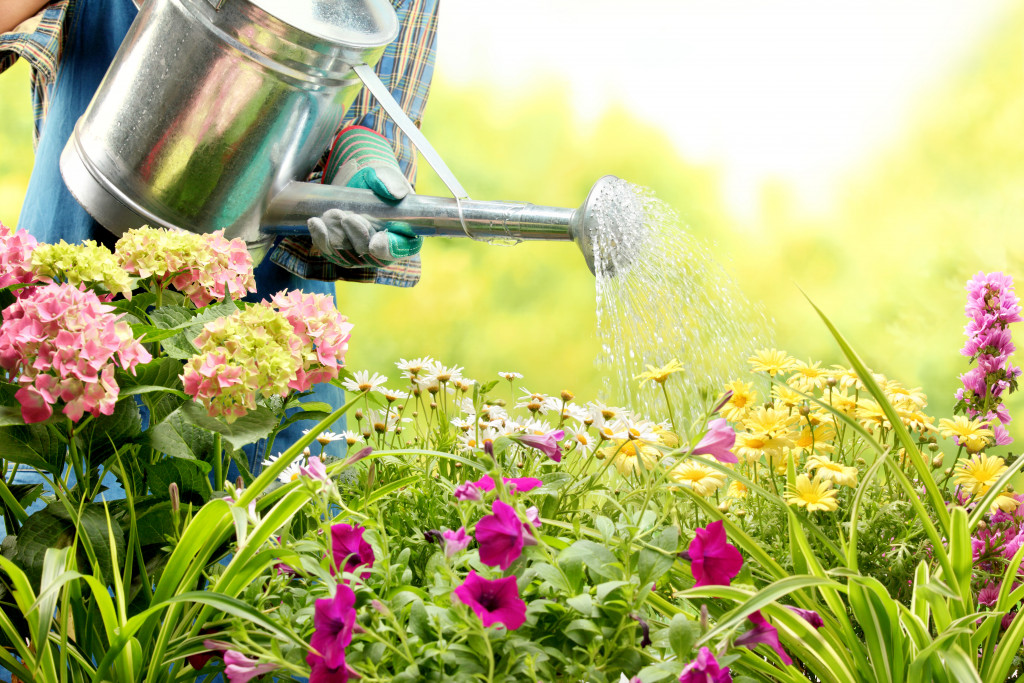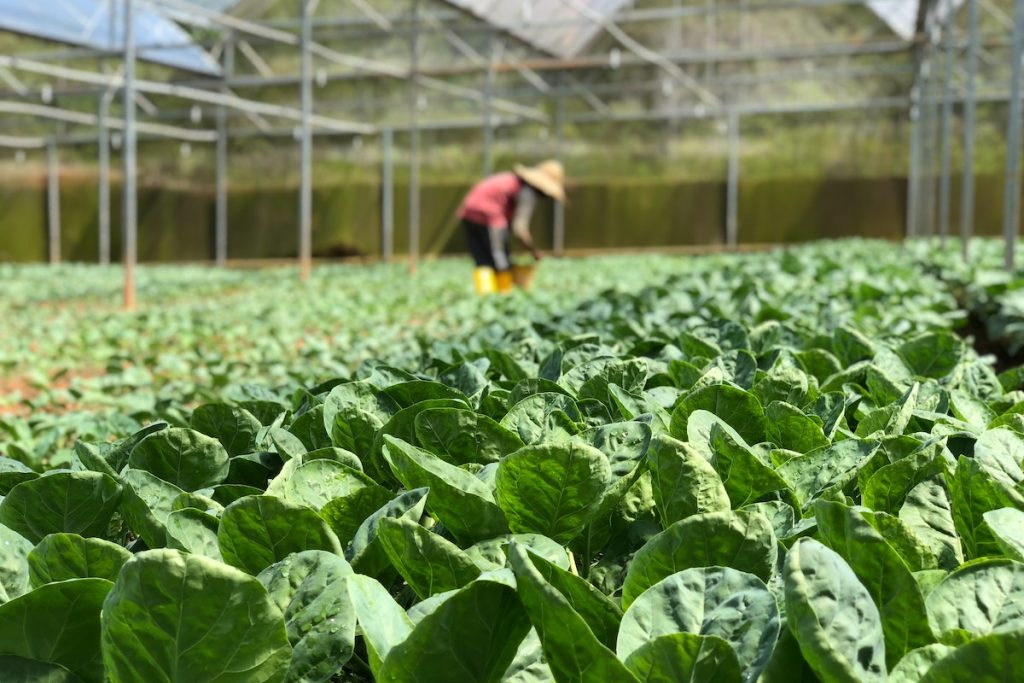A vegetable garden, also called a vegetable patch or vegetable plot, is designed for growing vegetables and other edible plants. This garden differs from a flower garden primarily for decorative purposes.
When organizing a garden, you must pick a spot, plan and prep the soil, choose seeds and plants, plant them, and care for them until harvest time. This garden yields fresh produce for eating, sharing, or selling. Dedicate some time every few days to nurture your spring garden; anyone can do it with a modest investment of money, time, and skill, which will improve over time. Keep going even if you fail on your first try.
Water is crucial for your garden’s success soil, and sunlight. However, watering your vegetable garden can be challenging. People may even have no idea how often to water a vegetable garden. Overwatering can cause diseases and unhappy plants like tomatoes and squash. On the other hand, underwatering can lead to stunted growth of vegetables like onions and a small harvest. So, it is crucial to water your garden properly to avoid unnecessary problems throughout the season.

Why Do Vegetable Gardens Need Water?
Vegetables are plants that are safe to eat and store food in different parts, like roots, stems, leaves, and fruits. They can be eaten raw or cooked as part of a meal or in salads. Vegetables are essential to international trade; most have been used since ancient times. While the food value of vegetables is not very high because they contain a large amount of water, typically ranging from 70 to 95 percent, they are still a nutritious addition to a diet.
To keep newly planted and young seedlings healthy, it’s essential to water them consistently. Water them lightly every morning and check again in the evening to avoid letting them dry out. Also, be careful not to let a dry crust form on the soil surface, as it can make it difficult for new seeds to grow. If a germinating seed dries out, it may not survive.
Significance of Water for Vegetables
Plants need water to survive and grow. It makes up almost all of their tissue and helps transport nutrients to different parts of the plant. Water is also crucial for photosynthesis, the process by which plants make food using sunlight, carbon dioxide, and water. This process happens through small openings called stomas on the leaves, producing oxygen as a byproduct.
Plants use a process called transpiration to prevent overheating. This process involves evaporating water on their leaves—the rate of transpiration increases in warm temperatures, wind, and dry air. The plant pulls more water through its roots as water evaporates from the leaves. Nutrients and sugars from photosynthesis dissolve in water and move from areas of high concentration, like the roots, to areas of lower concentration, such as the blooms, stem, and leaves. This helps with growth and reproduction.
Structural Support
Many plants rely on water to provide structural support to their cells through constant pressure on their cell walls, known as turgor. This makes plants flexible and strong, helping them bend in the wind and position leaves for optimal photosynthesis. If plants do not receive enough water, their tissues may turn brown, and their leaves may curl, ultimately leading to death. To promote deeper root growth, it is crucial to water garden plants thoroughly and deeply rather than frequently and lightly.
Best Time To Water Vegetable Garden Plants
For better results, it’s recommended to water your garden in the morning as it’s cooler and less water will evaporate during the process. Although you may water at the base of the plants, some water may splash onto the leaves. Watering in the morning gives the leaves enough time to dry out throughout the day, preventing the spread of diseases.
If you’re too busy with work and school in the mornings, you can water your plants in the evening. This is a good option because it’s cooler and less water is lost to evaporation. However, make sure you’re careful not to get too much water on the leaves of the plants since they won’t be able to dry out as quickly overnight.
Watering your plants in the middle of the afternoon is not recommended as it wastes a lot of water due to evaporation and strains your local water supply. Watering your garden in the morning or evening is better when the weather is cooler and more pleasant.
Watering Plants in the Morning
To save water and create a healthier environment for your plants, it’s best to water them in the morning. This practice is less wasteful and works well in most climates.
- Advantages – This product conserves water, follow a plant-friendly watering schedule, protects delicate leaves from sun damage, minimizes the chance of fungal issues, and allows plants to absorb water effectively throughout the day.
- Disadvantages – Be cautious when attempting to increase humidity as it may create a suitable environment for pests like spider mites, which thrive in evenly moist soil. It is essential to avoid overwatering or saturating already damp soil.
Watering Plants in the Evening
Although watering plants in the evening have some advantages, it’s not recommended to do it regularly. When you water plants in the evening, you end up saturating the soil while your garden is inactive, which can result in water going to waste.
- Advantages – Is it possible to revive dry soil after summer droughts? Yes, it is possible. The soil can be revived without drowning the plants if it is well-drained. Any excess water will drain away before morning. In the spring, you can warm up the cold soil by keeping full buckets out in the sun during the day and using warm water in the evening. This technique will enable you to plant earlier in the year.
- Disadvantages – Watering plants in the evening during winter can cause the soil to freeze and harm the roots. For clay or moisture-retentive soil, evening watering can lead to overwatering and fungal issues. Additionally, watering in the evening can result in water waste through runoff and drainage before the plants can absorb it in the morning.
Avoid watering plants during midday, as much of the water will be lost to evaporation. If you have plants that require more frequent watering, it should be done in the morning so they don’t dry out too quickly throughout the day. Additionally, if you are in an area with extremely hot weather, you may need to water your plants twice a day – once early in the morning and again at sunset.
Factors That Determine Frequency Of Watering Vegetable Garden Plants
The frequency of watering your vegetable garden plants varies depending on several factors to ensure the vegetables in your patio garden grow optimally. The watering frequency depends on the type of soil, climate, and vegetable you’re growing.

Soil Type and Drainage Considerations
To improve the clarity of your gardening routine, it’s essential to know the soil type in your garden. If your soil is sandy, it will require more frequent watering due to its greater drainage capabilities. The water seeps out quickly due to the larger particle size. Alternatively, if your soil is richer and denser, it will retain moisture for longer. To help retain moisture, add two to three inches of mulch or compost around your plants. Increasing the amount of organic matter in your soil can also help it retain more moisture. If there is a higher amount of organic matter in the soil, it will be able to retain more moisture.
Plant Maturity and Growth Stage
The type of vegetable you’re growing will also determine how often it needs to be watered. For example, newly planted and young seedlings require more frequent watering than mature plants. This is because the roots of young plants are less developed and can’t reach deeper into the soil for moisture. Similarly, vegetables in their flowering or fruiting stages require more water than those in their vegetative stages.
Weather Conditions and Climate
Weather and climate also play a role in determining how frequently you need to water your vegetable garden.
- Natural Rainfall – To ensure proper hydration for your vegetables, provide one to two inches of water each week, considering both manual watering and rainfall. It’s essential to monitor the incoming weather to plan accordingly. Pay attention to the weather to determine how often to water a vegetable garden. Take into account the temperature and rainfall amounts, and adjust your watering frequency accordingly. Some weeks may require watering every other day, while rainier periods may mean you don’t need to water as often. As a gardener, it’s crucial to stay aware of these conditions.
- Soil Dryness – The simplest and most effective way to determine when to water your plants is by checking the soil moisture with your hands. It’s best to hold off on watering if you feel any moisture. However, if the soil is completely dry, it’s time to irrigate again. Avoid keeping the plant saturated and wet all the time.
Season and weather variables like rainfall, humidity, temperature, wind, and hours of sunshine can influence the rate of water use. In general, plants utilize more water during warm summer, whereas in cooler winter, they require less. Additionally, water usage increases during hot, sunny, and windy weather.
Water Retention Capabilities of Mulch
To save time and money, you can conserve water in your garden by implementing methods such as mulching, drip irrigation, planting drought-resistant varieties, and using water-retaining inputs. Mulching reduces evaporation and suppresses weed growth, which helps to retain moisture in the soil and necessitates less watering.
To conserve water in your garden, consider using drip irrigation which delivers water directly to the roots of your plants and reduces evaporation and runoff. Additionally, planting drought-resistant plant varieties can further reduce water usage. You may also enhance soil fertility and water retention in your garden by incorporating inputs like biochar and compost into your soil.
10 Effective Vegetable Garden Watering Tips
Being mindful of how you use water in your garden is both an eco-friendly and practical option. It can help you save time and money while also benefiting your plants.
Understanding the signs of water stress in plants
Understanding the signs of water stress in plants is crucial to knowing when they need to be watered. When a plant doesn’t receive enough water, it shows signs such as brown tips, dull and lackluster appearance, and eventually dropping leaves. The plant will focus more on survival and may not develop new leaves or blossoms. If the plant is consistently under-watered, the leaves may not grow back. If watered intermittently, the leaves will go through a cycle of growing and dying off.
To clarify, the solution to help the plant is to water it in moderate amounts. Do not overwater the plant because you feel bad. Water the plant until the soil is damp, around two inches deep, and maintain this level on a regular schedule. Also, consider removing any blossoms or buds to encourage the plant to focus its energy on preparing for growth.
Using a drip irrigation system or soaker hoses for efficient watering
Drip irrigation systems and soaker hoses efficiently water your garden and reduce the amount of water lost through evaporation. Drip irrigation is a low-pressure system that slowly delivers water directly to the roots of each plant regularly. Soaker hoses are long tubes with tiny holes that deliver water directly into the soil.
If you’re looking for vertical garden ideas, you should consider this irrigation system. It can be used to water plants hung up or planted in towers, saving time and energy while delivering the necessary hydration for optimal growth.

Applying water directly to the root zone
When watering your plants, targeting the root zone is important. Try not to water the foliage of your garden plants, as this can cause leaf diseases and fungus growth. A soaker hose or drip irrigation system is the best way to ensure water reaches your plants’ roots.
This method will deliver moisture directly to where it’s needed most – at the roots. When the water reaches the roots, it is absorbed quickly and efficiently, providing hydration for healthy growth.
Watering deeply and infrequently to encourage deep-root growth
To ensure healthy turf growth, it is recommended to water deeply but less frequently. Newly planted turf may benefit from light sprinkling to develop roots in the topsoil, but established turf requires deeper root growth. Shallow roots from light sprinkling result in increased watering frequency, which can lead to weed and disease growth on the surface.
To promote healthy root growth, maximize water-use efficiency, and improve turfgrass quality, it is recommended to water deeply and infrequently, allowing water to penetrate the top 6 to 8 inches of soil. Remember that some grass varieties may have shallower root systems than others.
Mulching to conserve soil moisture and reduce evaporation
To reduce evaporation, cover bare soil with mulches. You have different options like landscape fabrics, pebbles, and stone-covering pots. However, the most effective mulches are made of well-rotted organic matter, such as compost, which also serves as plant food. Place mulches on moist soil with a minimum thickness of two inches or around five centimeters.
Using bark chippings as mulch is advisable as they allow rainwater to drain more easily. Grass clippings can also be used for mulching and are readily available. Ensure to keep the mulch topped up during summer. You can also apply this technique when you are practicing container gardening.
Adjusting watering frequency based on weather conditions
To ensure efficient watering, change how often you water depending on the weather. Water more often during hot and dry weather, and reduce watering during cooler and wetter weather. Additionally, it’s best to water close to the ground for maximum efficiency. Drip irrigation systems can be useful in avoiding misting, overspray, and runoff.
Monitoring soil moisture levels with a moisture meter or finger test
It’s important to monitor soil moisture levels to To save time and water. Two easy ways to do this are using a moisture meter or the finger test. To conduct the finger test, insert your index finger about two inches into the soil, and if it feels dry, it’s time to water. Place a moisture meter next to the plant’s root zone if you can access it. A reading between five and 10 indicates moist soil, while a reading below five indicates dry soil.
Avoiding overwatering to prevent waterlogging and root rot
Avoiding overwatering is essential when watering vegetables, as it can cause waterlogging and root rot. Too much water prevents oxygen from entering the soil and can suffocate plants. If your soil remains wet for extended periods, it will be unable to absorb any more water, and your plants won’t receive the hydration they need. To avoid overwatering, check soil moisture levels before watering and only water when needed.
Considering rainwater harvesting and recycling for sustainable watering
To reduce water usage and minimize runoff, consider harvesting rainwater and reusing it to water your plants. Rainwater is free of contaminants and minerals, so it’s ideal for vegetable gardens. You can collect rainwater in a cistern or barrel and use gravity-fed drip hoses for watering. Alternatively, you can set up an irrigation system, such as a drip or bubbler, that recycles water from a tank. This can help you save time and energy while reducing your environmental footprint.
Regularly inspecting and maintaining irrigation equipment for proper functioning
Inspecting and maintaining your systems regularly is important to ensure efficient irrigation and proper equipment functioning. This includes checking the water pressure, testing for leaks, adjusting sprinklers, cleaning filters, inspecting pipes and hoses for clogs or wear-and-tear, replacing broken parts, and calibrating timers. When you’re confident everything is working properly, you can schedule watering times and adjust as needed.
The frequency of watering your vegetable garden plants will depend on the type of soil, climate, and type of vegetable you’re growing. Monitoring weather conditions and soil moisture levels is important to adjust your watering routine accordingly. Additionally, consider implementing mulching and drip irrigation systems to reduce water usage. Finally, maintain and inspect your irrigation equipment regularly to ensure efficient water delivery for healthy growth in your vegetable garden.

